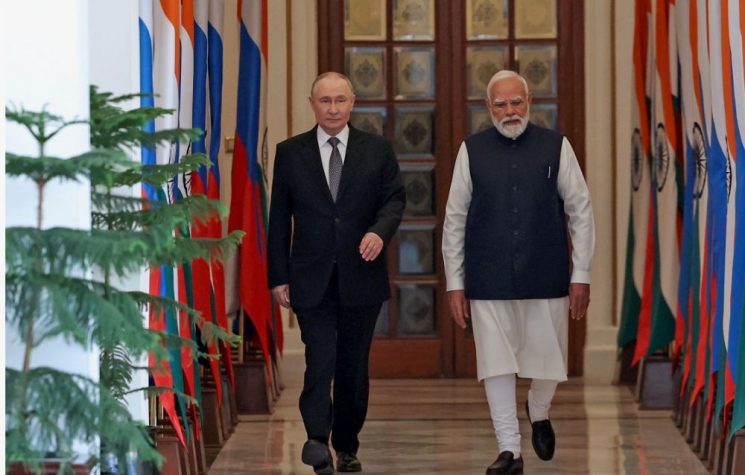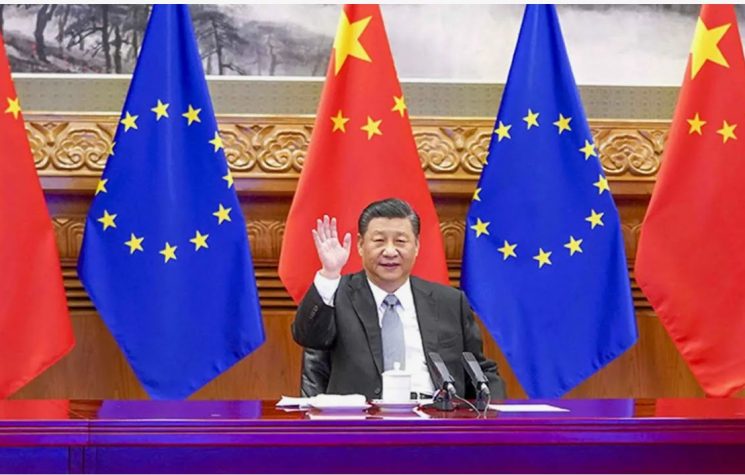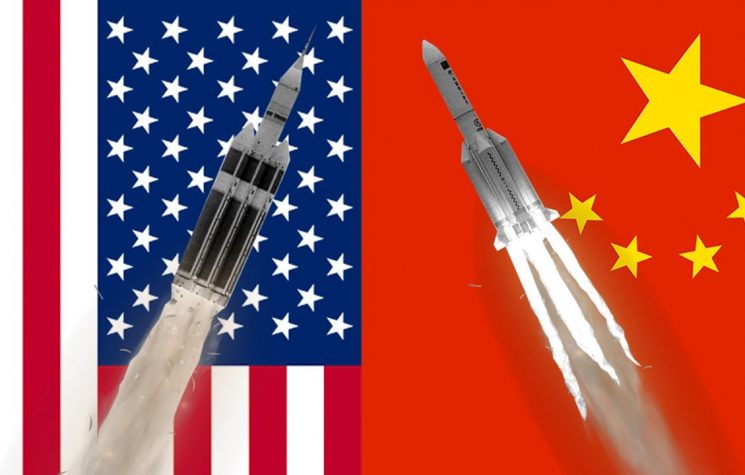With its space programs, the Red Dragon stands as one of the most important competitors on the global stage.
Contact us: info@strategic-culture.su
To better understand how the space domain is evolving, geopolitically speaking, we need to take a look at one of the leading countries-China. With its space programs, the Red Dragon stands as one of the most important competitors on the global stage.
The development of the Chinese space program
The Chinese space program began in the 1950s with cooperation with the Soviet Union, although this alliance was destined to break down due to the Sino-Soviet split in 1960. Despite the break in relations with the USSR, China persevered in developing its space capability, successfully launching its first satellite, the Dong Fang Hong, in 1970, weighing 173 kg. Since then, China’s space program has progressed rapidly, culminating in historic missions such as the launch of the Chang’e 3 lunar lander in 2013, which also included the Yutu 2 rover, which explored the hidden side of the Moon, revealing new scientific details.
In 2021, China launched its own space station, Tiangong, designed to support independent scientific research and reduce dependence on the International Space Station (ISS), which will be decommissioned in the coming years. By building Tiangong, China has gained an important platform for long-term space research, including missions to the Moon and Mars, putting the country on the map of space powers.
The space program of the People’s Republic of China (PRC) is managed by the China National Space Administration (CNSA), an entity that has promoted the country toward significant space milestones, making China one of the world’s leading space powers. By launching thousands of satellites, concluding manned space flights and developing its own space station, China has solidified its role in the global space landscape. Chinese President Xi Jinping has reaffirmed China’s intent to explore the Moon, Mars and beyond during 2023 and 2024, thus strengthening China’s strategic position in the space sector amid growing competition with the United States and other powers.
The space program in geopolitical competition
Space programs have always been influenced by geopolitical competition, an aspect that has not spared China. The Chinese space industry has increasingly integrated the private component, following the example of the United States, where the private sector has played an increasing role. China has thus diversified space-related economic opportunities, attracting other countries into its orbit through technological innovation, and has also made use of its satellite navigation system, BeiDou, as a strategic tool to expand its geopolitical influence. This system, launched in the early 2000s, overcame initial limitations and, with BeiDou-3, offered global coverage. The implementation of BeiDou has consolidated China’s satellite navigation capabilities for both civilian and military use, making it a crucial component for its space strategy and foreign policy.
On a military level. the Space Systems Department of the PLA Strategic Support Force (PLASSF) was established in 2015 to coordinate space warfare, information and electronic warfare, integrating space into Chinese military operations. As a result, the country has developed technologies for monitoring and early warning against missile threats, perfecting systems to damage or destroy enemy space targets, such as anti-satellite missiles (ASATs), high-energy lasers and electronic jamming.
China’s space program has also had significant repercussions on other industries and technology sectors. Technology developed for rockets, satellites and space stations has fueled innovation in areas such as microelectronics, communications, machinery manufacturing and bio-industry. For example, the research conducted has contributed to improved food security and environmental protection through the use of satellite remote sensing, which is used to monitor natural disasters and other emergencies.
As of 2022, China’s space program is estimated to have generated more than $30 billion in revenue, demonstrating a significant economic impact.
In recent years, China has boosted private sector participation in the space program, encouraging private companies to invest in the construction and development of rockets and satellites. Between 2015 and 2020, China’s commercial space industry saw exponential growth, with the market growing from $59 billion to more than $160 billion. Dozens of space start-ups have operated in China, advancing commercial space technology. This opening to the market has increased the country’s competitiveness and technological capability, although some nations, such as the United States, have accused China of militarizing space and using civilian facilities for surveillance purposes.
Tiangong and the future of Chinese space
A key step in China’s space program has been the development of its Tiangong space station, which consists of three main modules: Tianhe (the habitat), Wentian (laboratory) and Mengtian (another laboratory). China aims to build a space station that has similar capabilities to the International Space Station, and can host advanced scientific research, including supporting China’s Xuantian space telescope. Literally an alternative to the ISS. This initiative should not be underestimated at all, because other countries may be interested in cooperating, freeing themselves from American control of the space race.
The Chinese government saw the space program not only as an opportunity to advance scientifically, but also as a tool for international prestige. Xi Jinping has affirmed China’s aspiration to become a leader in space exploration, a statement that is part of a broader strategic plan that includes lunar and Martian missions. Goals that are also backed by strong political and economic commitment, with long-term planning for continued growth of China’s space infrastructure.
Space diplomacy and international cooperation
In the context of China’s growing space presence, China has taken a diplomatic approach to extend its global influence: it has signed numerous space cooperation agreements with countries around the world, including Pakistan, Venezuela, Nigeria, and Bolivia. In addition, China has invited members of the United Nations to cooperate with its space program, promising to offer access to its space resources. The European Space Agency (ESA) has already begun exploring opportunities for collaboration with China, while maintaining a clear commitment to separate scientific and military purposes.
China has also used its space diplomacy as a tool to promote its BeiDou satellite system globally, offering it free of charge to numerous countries as part of the Belt and Road Initiative. Space cooperation has also extended to Russia, which has collaborated with China on the BeiDou and GLONASS system, seeking to compete with GPS and Galileo globally.
What is clear and certain is that the Chinese space program, with its rapid development, has led China to become a space power of the first magnitude, capable of competing with the United States and other nations. State-of-the-art systems, international cooperation and long-term planning with large investments are the trump cards that are ensuring that China can achieve its goals.





























